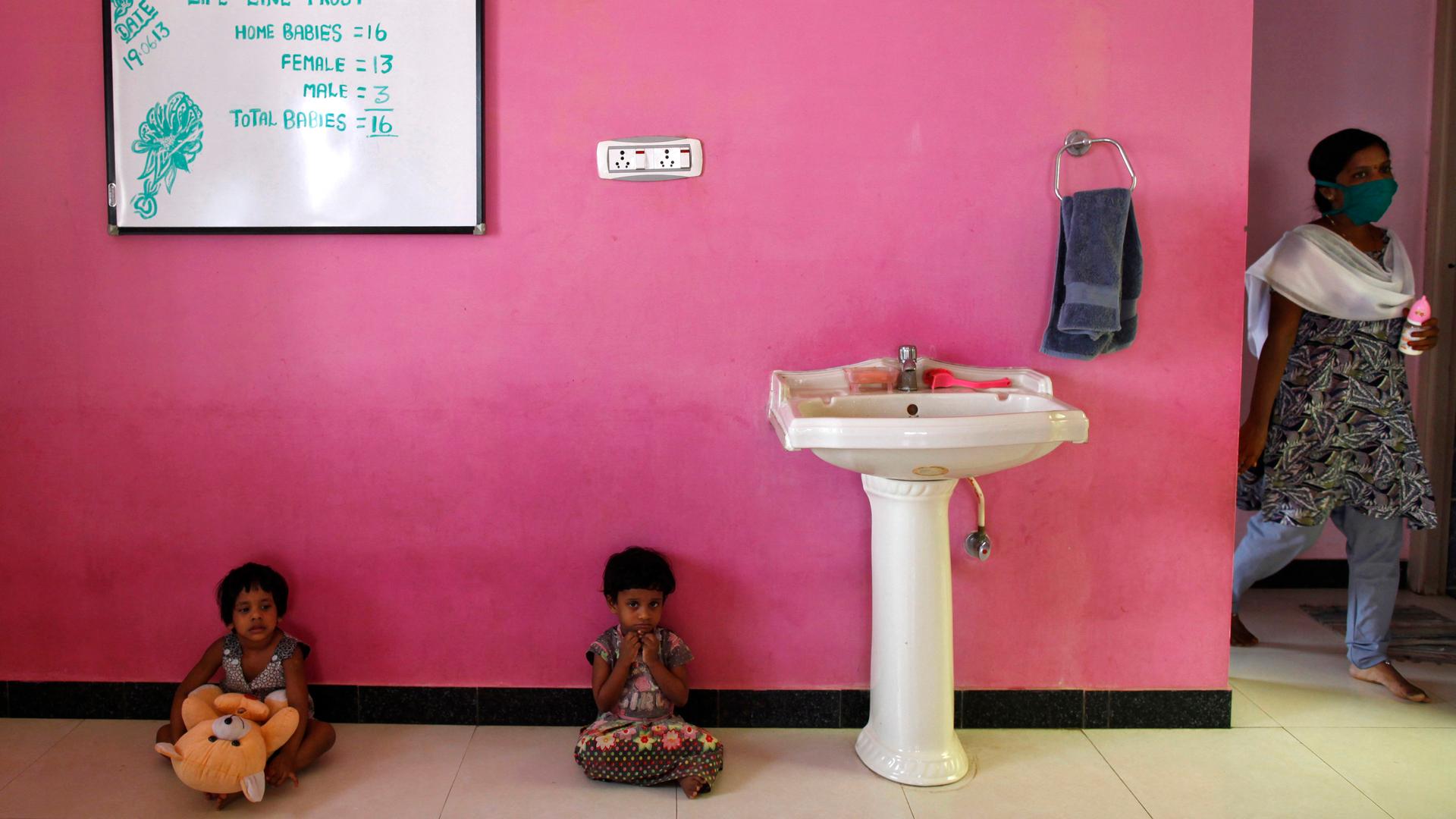In India, access to toilets remains a huge problem — worst of all for women and girls
Girls sit inside the Life Line Trust orphanage in Salem in the southern Indian state of Tamil Nadu on June 20, 2013.
It’s a very personal issue for every Indian girl and woman — access to toilets.
Some 70 percent of households in India don’t have access to toilets, whether in rural areas or urban slums. Roughly 60 percent of the country’s 1.2 billion people still defecate in the open. And the consequences for women are huge.
These range from polluted water leading to women and children dying from childbirth-related infections to the risk and reality of being attacked and raped, most infamously the gang rape of two teenage girls in rural northern India two years ago.
That incident shook everyone in and outside of India.
India's Prime Minister Narendra Modi promised to take on the crisis of lack of access to clean and safe bathrooms when he was elected two years ago. Since then, more than 1 million toilets have been planned or built.
But even where they have been built, studies have shown that the vast majority are not being used, especially in rural areas. In some cases, it’s because the toilets still aren’t connected to clean water and sewers. But more importantly, there’s been no widespread education effort to change the country’s culture of open defecation and lack of sanitation.
It’s a big issue even for women like me, who grew up in urban, educated, middle class households with toilets at home. As soon as you leave the security of your house, there’s no place for you to go. And even when there are toilets, like in my school growing up, they’re filthy. Most of my girlfriends and I would hardly ever use our school toilet.
We girls got used to it, to holding back for hours. It’s just how we grew up. But for girls in rural areas and urban slums, lack of access to clean toilets and sanitation is a big cause of dropping out of school, or not going to school at all. It’s the difference between education and independence and being locked into poverty and subjugation.
Men seem to feel no such constraints. In India, men pee everywhere, even in urban areas. Middle class, educated men — if they have to go, they’ll just stop their car and pee against a wall. Or even defecate on the sidewalk.
Modi’s initiative hasn’t been a failure. It’s important that he’s talking about the problem. At least people are finally thinking about it.
But without a deeper and broader cultural change in India, the effort will only result in millions of dollars wasted in building toilets that no one uses.
At The World, we believe strongly that human-centered journalism is at the heart of an informed public and a strong democracy. We see democracy and journalism as two sides of the same coin. If you care about one, it is imperative to care about the other.
Every day, our nonprofit newsroom seeks to inform and empower listeners and hold the powerful accountable. Neither would be possible without the support of listeners like you. If you believe in our work, will you give today? We need your help now more than ever!
